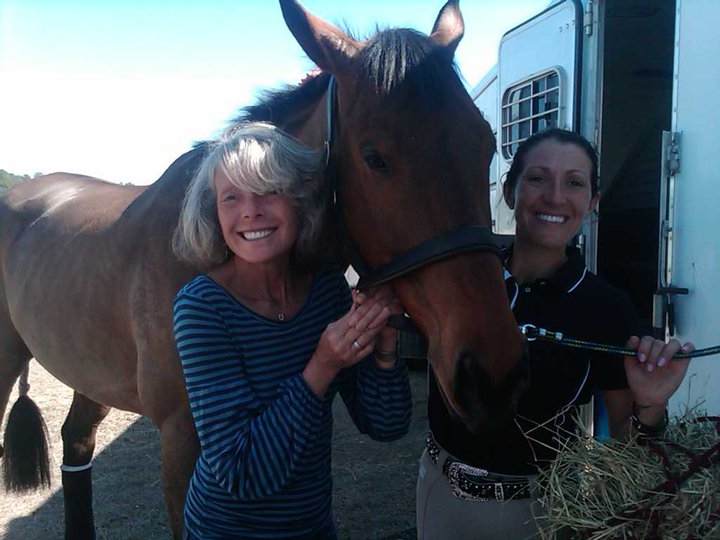
Acacia Courtney is crowned Miss Connecticut in June. The young founder of 501 c 3 nonprofit Racing for Home, Inc., pledges to be an ambassador for horses. Photo by Catherine Fiehn
Miss America hopeful Acacia Courtney pledges to bring horse-welfare awareness to a broader audience as she competes this September for the crown.
Fresh off her win in the Miss Connecticut pageant June 14, in which she spoke passionately to judges about her work in horse rescue, and of her professional goals to cover horse racing as a broadcast journalist, Courtney described her desire to become an ambassador of the sport of racing, and of horse rescue.
No stranger to the joys of a rescue horse, Courtney saved her dappled gray ex-racehorse Perfect Love from the Camelot Auction in 2011. (Please see an earlier story in Off-TrackThoroughbreds.com) From the moment she clipped on the lead rope, and walked beside the frightened mare to a waiting trailer, Courtney was hooked.
“Clipping that lead rope to her halter was a big moment in my life,” Courtney says in an earlier interview. “There were so many horses who wouldn’t make it out of there, and there was a big trailer backed up to a loading ramp, ready to take them to slaughter. It was very chilling.”
Shortly after, Courtney founded Racing for Home, Inc., a certified 501 c 3 nonprofit, which has since re-homed 15 horses.
Her passion for horses and racing were topics discussed during the interview portion of Miss Connecticut. She was queried on her opinion of Triple Crown contender California Chrome, and the chestnut steed’s outspoken co-owner Steve Coburn.
But she made sure she got in a word about less famous racehorses, and the fate that can befall some.
“The judges asked me about racing, and our conversation had a lot to do with the excitement surrounding California Chrome and they asked what I thought of Chrome’s owner (Steve Coburn) — I told them I didn’t think the rules of the Triple Crown should be changed” as Coburn suggested after his loss in the Belmont Stakes. “But, I told them I also really respected that he apologized on TV” for his animated outburst after his loss. Coburn was widely criticized in the press and social media for being a sore loser when Chrome failed to deliver the Triple Crown.
“We had a great conversation about it. Afterwards, the judges asked if there was one question I hoped they would have asked, and I said I was hoping they’d ask about my nonprofit Racing for Home,” she says. “I explained that not only have I rescued 15 off-track Thoroughbreds, but the experience has taught me to be a businesswoman, a fundraiser, and to market a brand.”
In addition to her equestrian and rescue accomplishments, Courtney, 21, of Hamden, Conn., is a gifted dancer. She performed ballet en pointe during the talent portion of the Miss Connecticut competition, and is also proficient in Jazz, musical theater and international ballroom dancing styles. She has studied at Steps on Broadway, the Joffrey Ballet School, and the American Ballet Theatre. And was a semifinalist out of 90 contestants in the 2009 Youth American Ballet Grand Prix Ballet Competition.
Her win mid-June at Miss Connecticut has her “walking on air” but her work back at the barn, where she stables the beautiful gray mare she saved, keeps her grounded.
“There are so many horses who need a home,” she says in an earlier interview. “Some of the most rewarding moments I’ve had with my horse have been in the show ring, when I tell people that this beautiful horse who looks so flashy is a half-blind ex-racehorse we rescued from a feedlot.”
Off-TrackThoroughbreds.com congratulates Acacia Courtney and will be rooting for her victory at the Miss America Finals Sept. 14!








